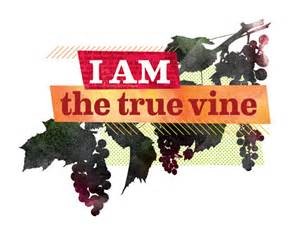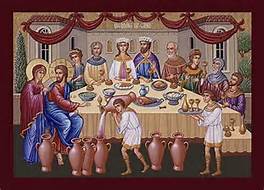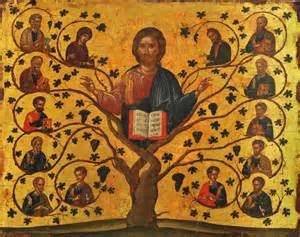Branches bear fruit, they don’t make fruit, said Rev. Jana Purkis-Brash in her sermon on Sunday, February 21, 2016. So if Jesus is the vine and we are the branches, we need to remember that we are empowered to do our good works only through Him. She explained other fascinating Biblical references to wine making on February 21, 2016, as below.

I need to preface this sermon by saying, I know nothing about wine. Here we are this morning focused on a passage where Jesus compares himself to a vine, and biblical scholars agree that vine would have been a grapevine, and the grapes would have been used to make wine.
In my research for this sermon, I found out that one foundational principle that applies to both Old World and New World winemaking is that great wine is always a reflection of a particular vineyard. If you want to pick a good wine, in other words, you have to know the source.

Jesus obviously knew a little about wine himself, we see him at social gatherings in the gospels and he knew exactly what kind of wine would impress the guests at the Cana wedding feast. So it shouldn’t be a big surprise that he used the metaphor of a vineyard to describe his relationship to his disciples. Jesus knew that the best way to tell what kind of product you were getting would be to look at the label and see from where in the world it came. In this case, the source isn’t a place but a person — Jesus himself.
Jesus is the Vine. Jesus begins by saying that he is the “true vine”, the source of growth and fruit-bearing, in a vineyard that is tended by God.
God is the Winemaker: The Creator God is the real winemaker, the one who tends the vineyard and assures its quality.
The Vineyard has a history: Turns out, that this vineyard has a long and storied history. The metaphor of the vineyard is used several times in the Old Testament to describe God’s relationship with Israel. In Isaiah 5:1-7, for example, God plants and tends a vineyard but it yields “wild grapes” or inferior fruit — a metaphor for the apostasy of Israel and Judah. The same vineyard imagery is used in Jeremiah, Ezekiel, and Hosea. In each of these cases, however, Israel is the “vine” and the ultimate source of poor “fruit.”
In the Old Testament, “fruitfulness” was another way of saying “faithfulness,” thus, a lack of good fruit meant that God’s people had failed to be the true, nourishing vine that would bolster God’s reputation in the world as the ultimate fine winemaker. That being the case, it was the winemaker’s job to do some pruning and replacing, which is what the prophets saw the exile as being all about.
Later, God would replant the vineyard with a new stock and that new vine, the “true vine,” would be Jesus himself who embodied the new Israel, God’s Chosen One, the One through whom the whole world would be saved and blessed.

The Branches are the focus: But while the vine is the source for good fruit, there’s a vital link between the vine and its fruit. The “branches” are thus the focus of Jesus’ teaching with his disciples. “I am the vine,” says Jesus to his followers, “you are the branches.” Notice that the disciples of Jesus aren’t the “fruit,” the end product, but the conduit for the vine’s nourishment. The quality of the fruit thus depends on the branches’ connectedness to the vine itself. What Jesus is describing here is the necessary interrelationship between himself and his disciples, us — a relationship characterized by mutuality and indwelling, but one that is also focused on bearing great growth for the whole world.
Look closely at a grapevine, though, and one of the first things you notice about its branches is that it’s very difficult to tell them apart individually. All the branches twist and curl around one another to the point that you can’t tell where one starts and another stops. Jesus’ use of branch imagery is a way of expressing that it’s not the achievement of an individual branch or its status that matters. The quality of branches and fruit depends solely on the quality of their connectedness to the vine. When it comes to discipleship, each “branch” or individual gives up his or her desire for individual achievement in order to become one of many encircling branches — a community that is rooted and nurtured by Christ and points to his reputation and quality, not their own.
With that understanding of branches in mind, there are a couple of things that we branches must remember in order to stay effectively and fruitfully connected to Jesus. First, we have to remember that branches are fruit bearing, and not fruit-making. “Just as the branch cannot bear fruit unless it abides in the vine, neither can you unless you abide in me … Those who abide in me and I in them bear much fruit because apart from me you can do nothing.” We’ve heard these words of Jesus many times, but we also hear the call of a culture of workaholism, achievement and success that can lure disciples of Christ into thinking that we can be fruitful as a result of our own efforts. Many are the pastors, for example, who have built large churches and famous reputations only to crash and burn as a result of moral failure, which is frequently the result of a failure to stay intimately connected to Jesus. When a branch gets the idea that it can make fruit, make wine, on its own, it dries up, withers, and is no longer useful. The mission of a branch isn’t to look good or to call attention to itself, but to give all the glory to God, the one whose name is on the label.
In the vineyards of Jesus’ day, grapevines grew naturally along the ground instead of being propped up on poles or lattices as they are today. The vinedresser would come along to lift and “clean” the vine, pruning away the excess and dead growth. Jesus uses the same image to describe the way the disciples themselves had been “cleansed by the word that I have spoken to you.” That “word” was the teaching and commandment of Jesus and the disciples’ meditation on and obedience to that “word” would help them “remain” or stay connected to his “love” — the nourishing flow from the vine. This is how being connected to Jesus changes our lives.
Reading, meditating and praying through the Scriptures is one way in which disciples are “pruned.” The words of Jesus about the kingdom and the story of his life, death and resurrection focus us on what’s truly important for bearing the fruit of his grace and love to the world. When the writer of Hebrews says that Scripture is “sharper than any two-edged sword” (Hebrews 4:12), he might have as easily said that Scripture was the ultimate set of pruning shears, trimming us for the life of discipleship we were meant to live. Such pruning can be painful as God uses it to lop off old habits, but it’s absolutely necessary if we’re going to embrace our purpose as conduits of God’s grace. Again being changed by Jesus.

Great wine is the reflection of a particular vineyard, be it from an Old World tradition or an eclectic New World experiment. God wants to tend the finest vineyard ever, here and now. May we, as disciples of Jesus, the true vine, embrace our role as branches — channels for God’s grace, so that when the world samples the fine vintage of God’s love and grace, they will want to know the winemaker!

 This is the Sunday for another
This is the Sunday for another 








 From Rev. Catherine Williams: As I write this note Lent is on my mind. This is the time of the liturgical year I think of death and renewal. The dry, barren woods behind my home remind me that nature is in her own necessary cycle of death and renewal, even as Lent approaches. What images does Lent conjure for you? As a child growing up in Anglican schools the images of this season were markedly somber: fasting, deprivation, denial, meatless Fridays, penitence, confession, and lots of songs in minor keys! It was all about traditional piety back then. As an adult however, I’ve learned to lean into Lent more purposefully. Leaning into Lent means preparing to strip down my faith to its bare essentials. I don’t always succeed but the process always yields a healthier spirituality.
From Rev. Catherine Williams: As I write this note Lent is on my mind. This is the time of the liturgical year I think of death and renewal. The dry, barren woods behind my home remind me that nature is in her own necessary cycle of death and renewal, even as Lent approaches. What images does Lent conjure for you? As a child growing up in Anglican schools the images of this season were markedly somber: fasting, deprivation, denial, meatless Fridays, penitence, confession, and lots of songs in minor keys! It was all about traditional piety back then. As an adult however, I’ve learned to lean into Lent more purposefully. Leaning into Lent means preparing to strip down my faith to its bare essentials. I don’t always succeed but the process always yields a healthier spirituality.

 “Remember that you are dust, and to dust you shall return.”
“Remember that you are dust, and to dust you shall return.” This Sunday, the first Sunday in February, we will observe Holy Communion. JJ Flag will preach. As part of the last in the series of “Healthy Spirituality: Inside Out” he will tie it all together. At the 9:30 service, Cindy Gordon will give the Children’s Sermon, and Tom Shelton will direct the Youth Choir.
This Sunday, the first Sunday in February, we will observe Holy Communion. JJ Flag will preach. As part of the last in the series of “Healthy Spirituality: Inside Out” he will tie it all together. At the 9:30 service, Cindy Gordon will give the Children’s Sermon, and Tom Shelton will direct the Youth Choir.
